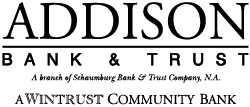Fed Interest Rate Changes: How Does This Impact Your Personal Finances?
Fed Interest Rate Changes: How Does This Impact Your Personal Finances?
When the economy begins to lose its balance — with either talk of inflation or recession — all eyes turn to the Federal Reserve (the Fed). Everyone anxiously awaits their next move as their ability to change interest rates can cause a massive ripple effect throughout the economy.
The interest rate the Fed controls is commonly referred to as the “fed funds rate.” This is the overnight rate that banks borrow from the Fed, which directly and indirectly impacts many other rates, such as prime and U.S. Treasury rates. These affect things like mortgage rates, savings and CD rates, credit card rates, and many others that have a hold on our daily lives.
Why the Fed alters the fed funds rate
Congress created the Federal Reserve in 1913 to help improve the economy and social welfare. A major goal of the Fed is to keep prices stable, and they can take action to help stop prices from falling or rising too quickly by raising or lowering the fed funds rate. When inflation is too high, the Fed can raise the rate to help slow the economy and attempt to lower inflation. On the other side of the spectrum, if inflation is low and the economy needs a boost, the Fed can lower the rate to help stimulate the economy — hopefully, while keeping inflation at a moderate level.
The effects of interest rate changes
To better understand how your finances can be affected by the Fed’s interest rate changes, it can help to look at a few examples of ways that these changes tend to affect financial products and consumer habits.
The prime rate
The prime rate, or prime, is an interest rate that banks commonly use to determine the rate on loans to their customers. When the Fed changes the fed funds rate, the prime immediately changes by the same amount. When prime rises or falls, banks increase or decrease their variable-rate borrowing costs for their products, such as credit cards, home equity loans, and lines of credit.
Savings rates
When the Fed raises rates, it leads to savings products like money market accounts and certificates of deposit (CDs), having higher interest rates, which can help consumers earn more money on their savings. On the other hand, when the Fed lowers rates, savings products follow in line with lower yields.
Mortgage and auto loan rates
Car companies often benefit when the Fed lowers rates as consumers can better afford to buy new cars when auto loans come with lower interest rates. The same goes for home purchases. Higher interest rates increase the cost of borrowing money to buy a home, which may make the housing market less competitive for buyers, while the opposite is true when interest rates on mortgage loans are lower.
Bond prices
Changes in interest rates can also affect other financial products, such as bonds. The effects of interest on bonds are complex, but in general, rising interest rates are detrimental to fixed-income investors who do not hold their bonds to maturity, as a rise in rates causes bond prices to fall.
Consumer spending
When the Fed raises interest rates, customers typically spend less, especially on large purchases, as credit card debt and other lending products like personal loans and mortgages become more expensive. While slowing consumer spending will tend to lower inflation, consumer spending makes up 70% of the U.S. economy, so it will also slow the economy. This is the careful balance the Fed tries to keep when it attempts to lower inflation.
The takeaway
Interest rate hikes or declines can significantly affect consumer finances. When the Fed alters interest rates, the effect spreads throughout the entire economy, from how individuals save to how they spend to how they invest or borrow money. Understanding these connections can help you be financially prepared for future interest rate changes.
It’s important to remember that rates ebb and flow in an attempt to maintain economic balance. While a decreased fed rate leads to reduced consumer incentives for savings products, it can mean increased incentives for homebuyers, as mortgage rates fall in line, or for credit card users, as annual percentage rates (APR) fall slightly.
“Look at what rates have done in the past — look at history because history is going to repeat itself,” says Sandra Gallardo, Vice President and Area Branch Manager at Schaumburg Bank & Trust. “We go through these cycles when the rates go down and then come back up.”
Staying informed is the best thing you can do to ensure you’re making the best financial decisions for the current economic climate. For more information about how fluctuating interest rates impact your personal finances, contact one of our bankers or stop into your local branch.
Take a different approach to financial wellness.
Sign up for personal financial tips, timely updates, and special offers when available!





